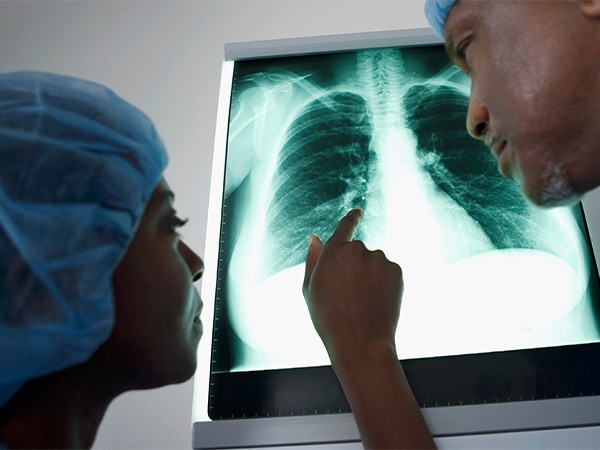Predicting Which Lung Nodules Will Progress to Cancer
Researchers recently developed a risk prediction model that could categorize individuals with lung nodules as having high or low risk for lung cancer.

While lung cancer incidence and mortality has declined during the last 20 years, this disease is still the leading cause of cancer death in the United States. Over 225,000 people will be diagnosed with lung and bronchus cancer this year, according to recent estimates.
If caught early, while the cancer is still localized, the five-year survival rate is greater than 50 percent. However, most lung cancer cases are diagnosed after the cancer has metastasized, and the prognosis for these cases remains poor – the five-year survival rate is just over 5 percent. As such, early detection of the disease remains a priority in the field.
Lung nodules – sometimes referred to as “shadows” or “spots” on radiology scans – are growths in lung tissue that are linked to a variety of causes, including infections. Lung nodules are usually benign, and they typically do not have any associated symptoms. However, a small percentage of lung nodules will progress to lung cancer.
To help anticipate which nodules have the highest likelihood of becoming cancerous, a recent study published in Cancer Prevention Research, a journal of the American Association for Cancer Research (AACR), described a model to predict lung cancer risk for cancer-free individuals presenting with a lung nodule.
The researchers analyzed data from nearly 3,000 patients to develop and validate a risk prediction model based on clinical features (age, smoking pack-years, personal history of cancer, and the presence of chronic obstructive pulmonary disease) and characteristics of the nodule (its size, if it was spiculated, and if it had a ground-glass opacity). All of these factors were combined to develop an overall risk score to stratify patients into high- and low-risk categories of developing lung cancer.
When the researchers applied their risk prediction model to the validation cohort, they found that they could discriminate cancer risk with a sensitivity and specificity of 73 percent and 81 percent, respectively. Individuals in the high-risk category had more than 14 times the risk of developing lung cancer compared with individuals in the low-risk category.
Barbara Nemesure, PhD, director of the Cancer Prevention and Control Program and the Lung Cancer Program at Stony Brook Cancer Center in New York and an author on the study, noted, “Through our model, we can identify which individuals with lung nodules should be closely monitored, so that we can catch the disease at an early stage and ultimately reduce the burden of lung cancer deaths.”